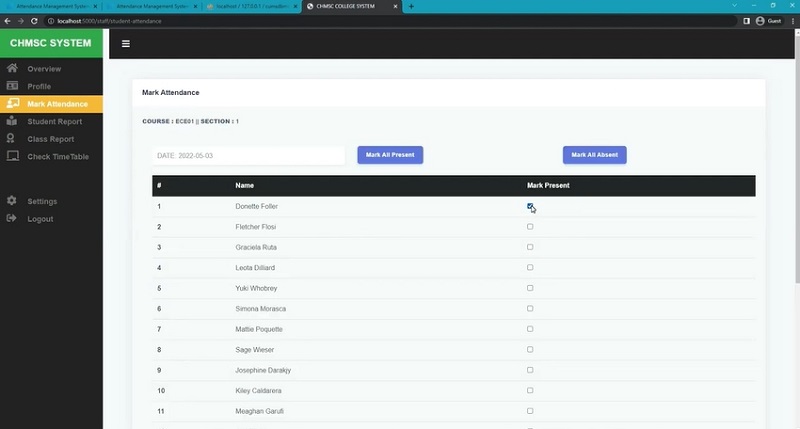
In today’s fast-paced world, managing attendance efficiently is crucial for any organization or institution. Gone are the days of manual attendance tracking, as businesses and educational institutions are now leveraging the power of technology to streamline this process.
In this article, we delve into the world of Attendance Management Systems (AMS) and explore its features in JavaScript. We’ll uncover the benefits and functionalities that make this system an indispensable tool for modern-day establishments.
What is Attendance Management System?
An Attendance Management System, as the name suggests, is a digital solution designed to record, track, and manage attendance for employees, students, or any group of individuals within an organization.
The system aims to replace traditional manual methods, such as pen-and-paper or Excel sheets, with a more efficient and accurate automated approach.
Key Benefits of Attendance Management System:
1. Time-Saving Efficiency
By automating the attendance tracking process, the AMS eliminates the need for manual data entry and reduces the time spent on recording attendance. This newfound efficiency allows organizations to focus on more critical tasks, ultimately increasing productivity.
2. Real-Time Tracking
One of the most significant advantages of an Attendance Management System is its ability to offer real-time attendance tracking. With immediate access to attendance data, administrators can make informed decisions promptly and take necessary actions as and when required.
3. Accurate Data Recording
Manual attendance tracking often leads to errors and discrepancies in data recording. An AMS, on the other hand, ensures accuracy by eliminating human errors, providing reliable attendance records for analysis and decision-making.
4. Increased Security
Modern AMS solutions incorporate security features, such as biometric authentication and access controls, to prevent unauthorized access and maintain data integrity. This ensures that attendance data remains confidential and secure.
Features of Attendance Management System in JavaScript
- Homepage – For the homepage you can see the accounts of students, admin and the records of students attendance.
- Manage User Account – The admin can manage the user’s account. Admin can add, update and Block Users in the system.
- Student Management – The admin can manage the student account. Admin can add, update and delete student’s in the system.
- Manage Student Record – The admin can manage the student record. Admin can see the student login time and date.
- Login and Logout – By default one of the security features of this system is the secure login and logout system. The login and logout system of this Attendance Management System in JavaScript source code uses a session. It means that the user can only log in at once on the same browser.
Attendance Management System in JavaScript with Source Code

| ABOUT PROJECT | PROJECT DETAILS |
|---|---|
| Project Name : | Attendance Management System in JavaScript |
| Project Platform : | JavaScript |
| Programming Language Used: | php,javascript,html,css |
| IDE Tool (Recommended): | Sublime |
| Project Type : | Web Application |
| Database: | None |
| Link Download: | download |
Conclusion
An Attendance Management System built with JavaScript is a game-changer for organizations and educational institutions seeking to optimize their attendance tracking process. Its time-saving efficiency, accuracy, and real-time tracking capabilities propel it to the forefront of modern business practices. By adopting an AMS, establishments can focus on their core operations, enhance productivity, and foster a seamless work or learning environment.
In conclusion, implementing an Attendance Management System in JavaScript is a strategic decision that will undoubtedly elevate any organization’s efficiency and performance. The comprehensive features it offers ensure a smooth attendance management process, helping organizations stay ahead of the curve and embrace a future of streamlined operations.






